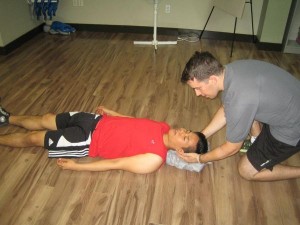Cardiogenic shock occurs when the heart’s contractility in pumping blood throughout the body is impaired and the supply of oxygen rich blood is not reaching the vital organs of the body for nourishment. The cause of cardiogenic shock is known as either coronary or noncoronary in nature.

Coronary cardiogenic shock is more common than noncoronary cardiogenic shock and is seen most often in patients with myocardial infarction. Coronary cardiogenic shock occurs when a significant amount of the left ventricular heart muscle has been severely damaged due to hypoxia and hypertrophy. Individuals who experience an anterior wall myocardial infarction are at an even greater risk of succumbing to the complications of cardiogenic shock because of the potentially extensive damage to the to the left ventricle (the chamber of the heart that is responsible for the delivery of blood throughout the systemic circulation) caused by an occlusion of one of the blood vessels of the heart. Noncoronary causes of cardiogenic shock are usually related to conditions that stress the myocardium such as ischemia, acidosis, and hypoglycemia as well as conditions that result in ineffective myocardial function such as dysrhythmias
Pathophysiology of cardiogenic shock
In cardiogenic shock, cardiac output, which is the most vital function of both stroke volume and heart rate becomes compromised which may be attributable to an individual’s current state of health as well other predisposing factors that increases their risk. When both stroke volume decreases or at some point becomes too erratic for the natural conductivity and contractility of impulses to give an effective rhythm it would cascade to several dysfunction of the body including a profound drop in blood pressure and tissue perfusion becoming compromised.
Blood supply for tissues and organs and to the heart muscle itself is inadequate, resulting in impaired perfusion of organs and tissues. Since impaired tissue perfusion weakens the heart and impairs its ability to pump blood throughout the system, the result would be fluid accumulation in the lungs which literally result in drowning of the individual’s own fluids.
Medical management of cardiogenic shock
The goals of medical management in cardiogenic shock are the following: (1) to limit further myocardial damage and preserve the healthy remaining muscles of the heart and (2) to improve the cardiac function by increasing cardiac contractility, electrical conductivity and decreasing ventricular after load. In general, these goals are achieved by increasing oxygen supply to the heart muscle while at the same time reducing the demand of oxygen. The first line treatment of cardiogenic shock involves the following:
- Supplying supplemental oxygen
- Providing selective fluid administration and support
- Controlling chest pain
- Administering vasoactive medications
- Monitoring and controlling the heart rate
Correction of the underlying cause of cardiogenic shock
As with all forms of shock, the underlying cause of cardiogenic shock must be first corrected. It is necessary first to treat the
oxygenation needs of the heart muscle to properly ensure its continued ability to pump blood to the vital organs of the body. In case or coronary cardiogenic shock, the patient may be provided with several treatment options such as thrombolytic therapy or the more invasive procedure of angioplasty. In case of noncoronary cardiogenic shock, interventions are primarily focused on correcting the underlying cause, such as replacement of faulty cardiac valve, correction of dysrhythmia, acidosis and electrolyte imbalances that would have resulted in the occurrence of cardiogenic shock in patients.
